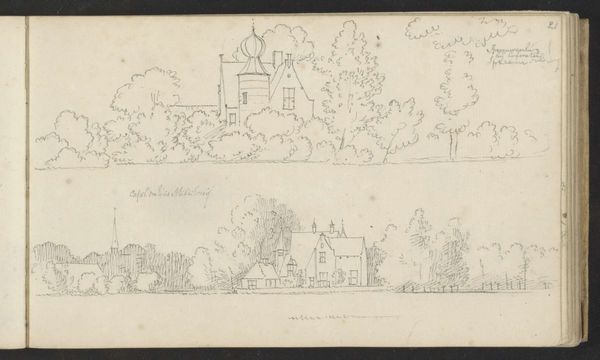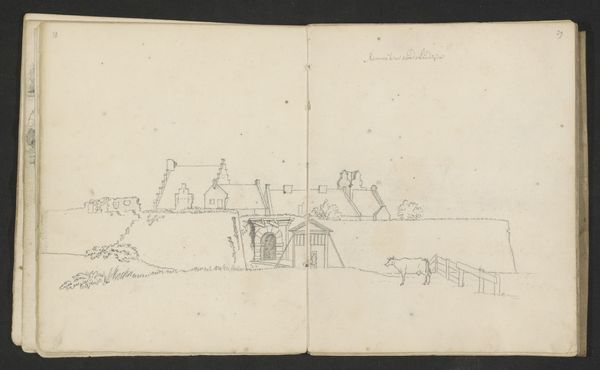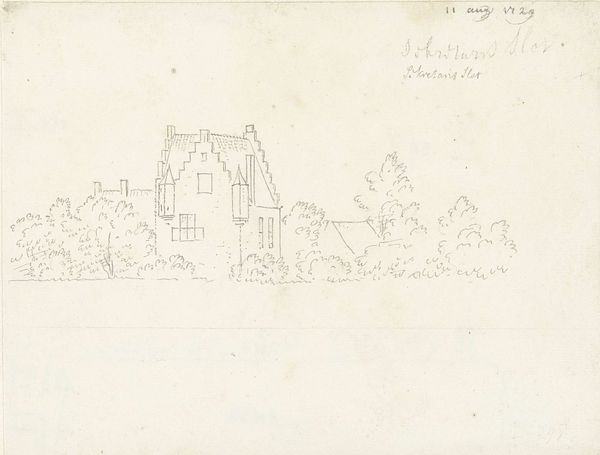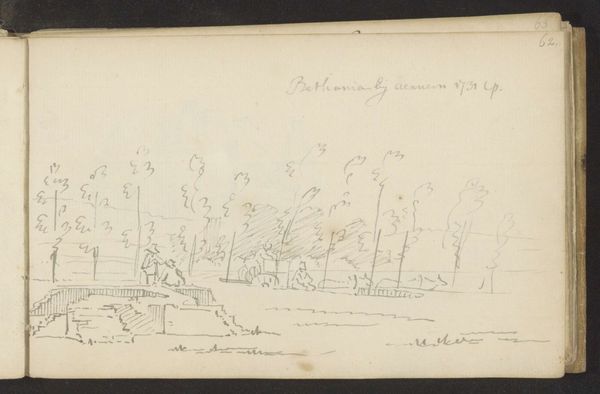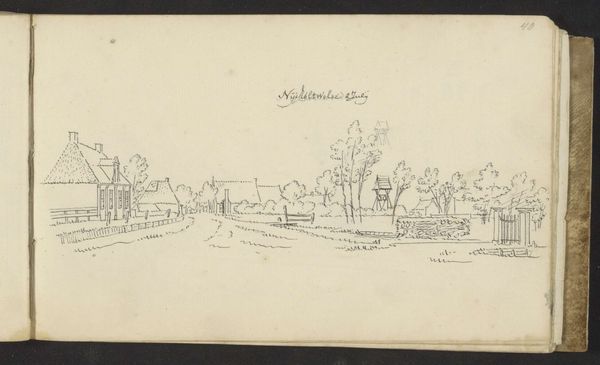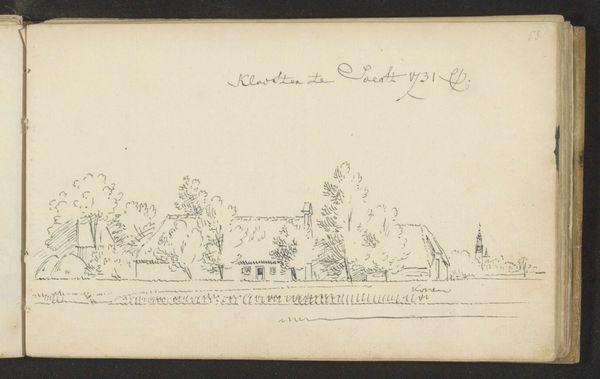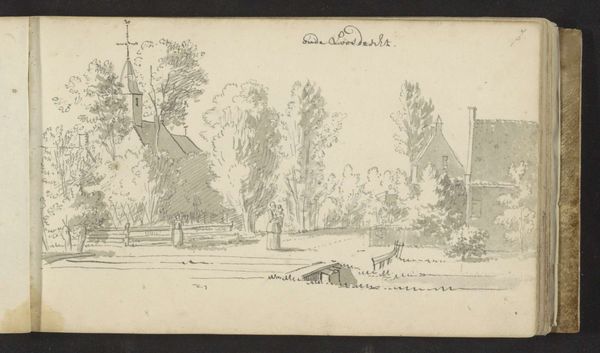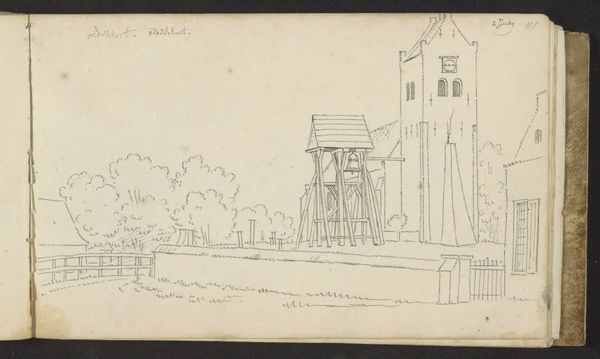
Gezicht op Spakenburg en Hoolvoord bij Nijkerk Possibly 1732 - 1736
0:00
0:00
drawing, paper, pen
#
drawing
#
quirky sketch
#
dutch-golden-age
#
pen sketch
#
sketch book
#
landscape
#
paper
#
personal sketchbook
#
sketchwork
#
pen-ink sketch
#
pen work
#
sketchbook drawing
#
pen
#
storyboard and sketchbook work
#
sketchbook art
Copyright: Rijks Museum: Open Domain
Editor: So, this drawing is "Gezicht op Spakenburg en Hoolvoord bij Nijkerk," possibly from 1732 to 1736, by Abraham de Haen the second. It's a pen and ink sketch on paper. There's something so immediate about it, like a quick impression of the landscape. What strikes you when you look at this? Curator: What I find interesting is the way De Haen captures these Dutch villages. It’s not just a picturesque scene. Think about the Dutch Golden Age – this era of immense economic power built, in part, on colonial exploitation. How do we read these seemingly innocent landscapes knowing that wealth was directly linked to the suffering of others across the globe? Editor: That's a heavy thought, layering that context on top. I guess I was just seeing a charming little sketch. Curator: Exactly! The sketch appears simple, almost naive, but it was produced during a time of great social and economic complexity. We must question whose stories are being told and whose are being erased by this focus on idyllic village life. Were these images also forms of cultural propaganda, reinforcing national pride while obscuring darker truths? Editor: So, it’s not just about what's in the frame, but what’s *not* in the frame too? Like the colonial enterprises and inequality of the time. Curator: Precisely. These images served to codify specific Dutch values linked to their perceived natural landscape. Also note the absence of certain marginalized people and even their land cultivation practises. Are these landscapes neutral representations or rather carefully curated representations for select people and political purposes? Editor: I see. It’s a reminder that even a simple landscape drawing carries the weight of history and societal power structures within it. Curator: Yes! Considering this history urges us to understand landscapes not only for their aesthetic qualities but for what they actively hide. A deeper interrogation allows for intersectional conversations in a visual culture setting that benefits historical understanding. Editor: Thanks. I'll definitely think differently about landscapes from now on!
Comments
No comments
Be the first to comment and join the conversation on the ultimate creative platform.

